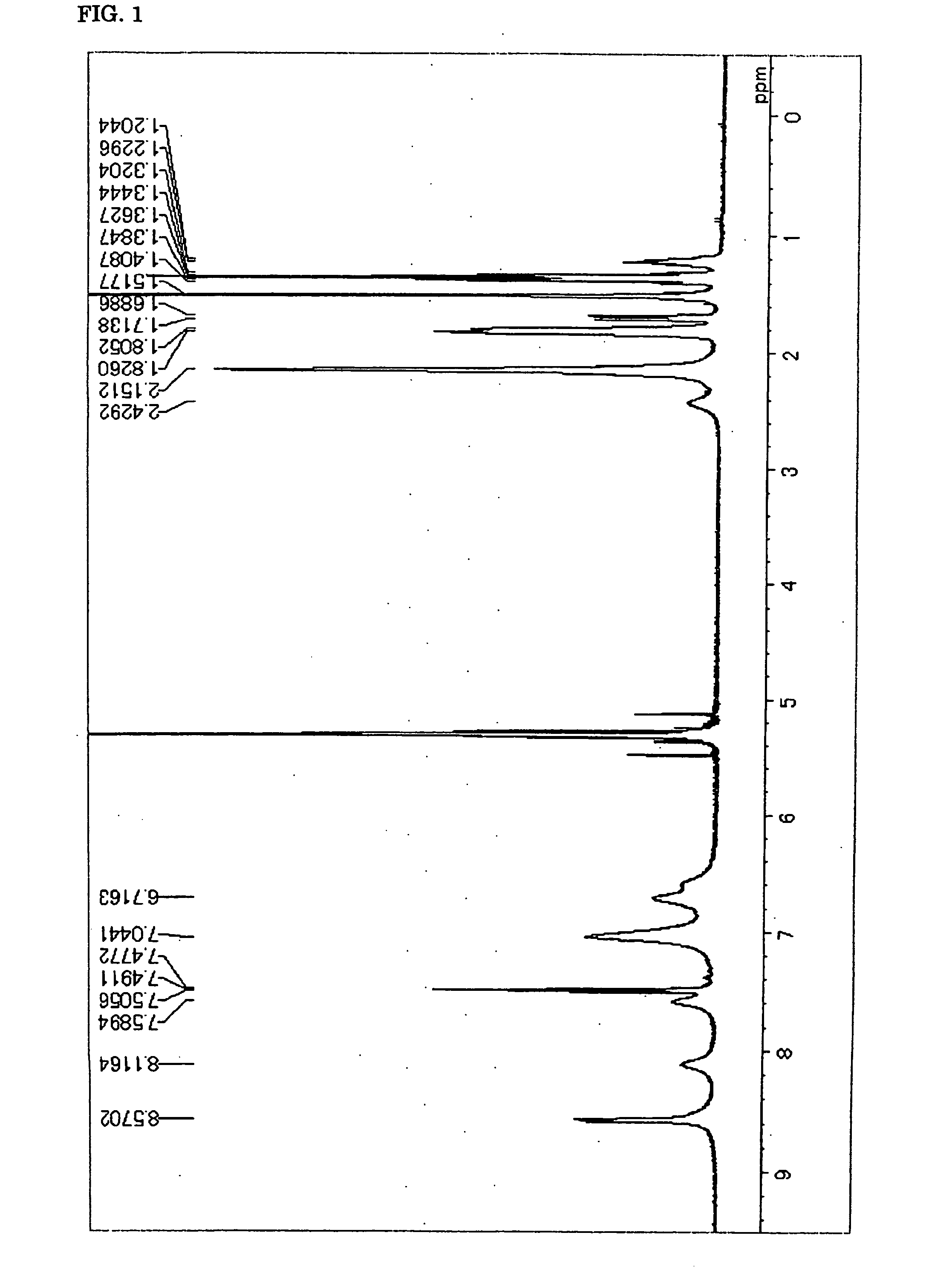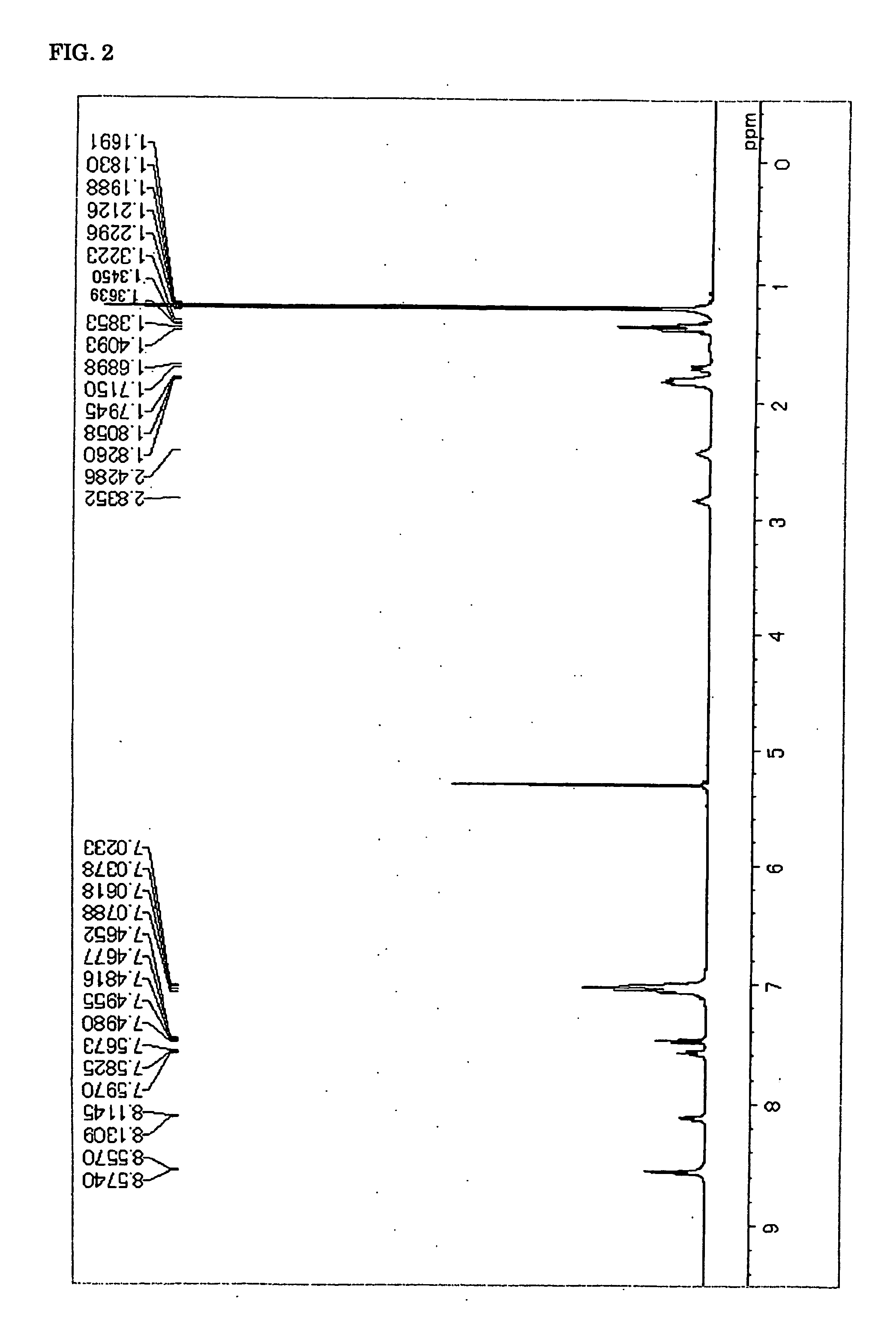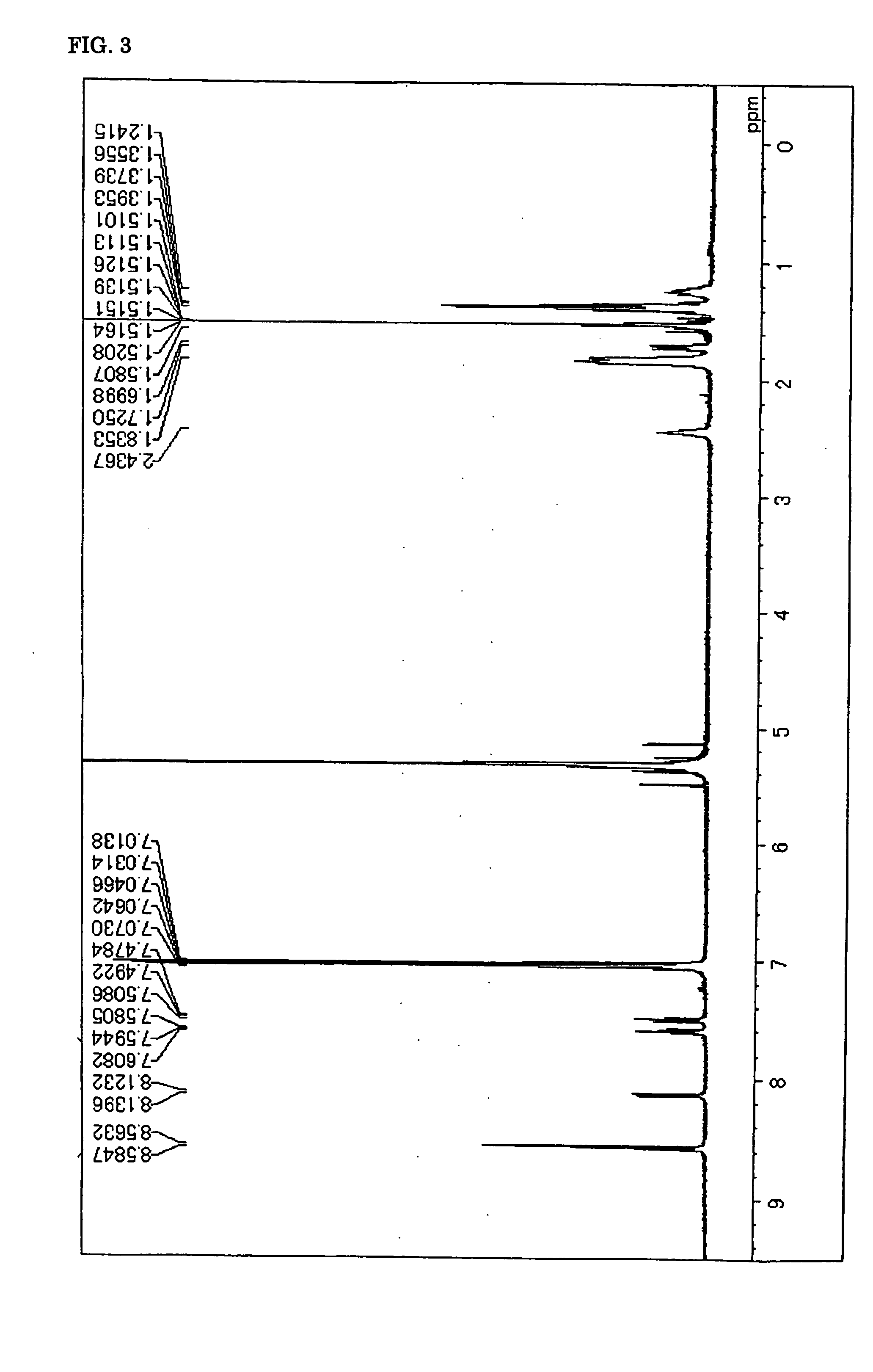Aromatic amine derivative and organic electroluminescence device using the same
an organic electroluminescence and amine technology, applied in the direction of discharge tube luminescnet screen, natural mineral layered product, amino compound preparation, etc., can solve the problems of high driving voltage, low luminance or low light emission efficiency of conventional organic el devices, and inability to be used in practice, etc., to achieve enhanced light emission efficiency, sufficient luminance, and resistance to deformation
- Summary
- Abstract
- Description
- Claims
- Application Information
AI Technical Summary
Benefits of technology
Problems solved by technology
Method used
Image
Examples
synthesis example 1
Synthesis of Compound (D-24)
[0090] Under an atmospheric argon gas flow, 6,12-dibromochrysene in an amount of 3.8 g (10 mmol), (4′-cyclohexyl phenyl)-3,5-dimethylphenyl amine in an amount of 7.0 g (25 mmol), palladium acetate in an amount of 0.03 g (1.5% by mol), tri-t-butylphosphine in an amount of 0.06 g (3% by mol), t-butoxy sodium in an amount of 2.4 g (25 mmol) and desiccated toluene in an amount of 100 milliliter were placed into a three-neck flask equipped with a cooling pipe and having a capacity of 300 milliliter, and the resultant solution was stirred under heating at a temperature of 100° C. for one night. After the reaction terminated, precipitated crystals were separated by filtration and washed with the use of 50 milliliter of toluene and 100 milliliter of methanol, and as a result, 6.6 g of pale yellow powders were obtained. The pale yellow powders were identified as Compound (D-24) from the result of 1H-NMR spectrum (FIG. 1) and Field Desorption Mass Spectrum (FD-MS)...
synthesis example 2
Synthesis of Compound (D-26)
[0091] Under an atmospheric argon gas flow, 6,12-dibromochrysene in an amount of 3.8 g (10 mmol), (4′-cyclohexyl phenyl)-4-isopropylphenyl amine in an amount of 7.3 g (25 mmol), palladium acetate in an amount of 0.03 g (1.5% by mol), tri-t-butylphosphine in an amount of 0.06 g (3% by mol), t-butoxy sodium in an amount of 2.4 g (25 mmol) and desiccated toluene in an amount of 100 milliliter were placed into a three-neck flask equipped with a cooling pipe and having a capacity of 300 milliliter, and the resultant solution was stirred under heating at a temperature of 100° C. for one night. After the reaction terminated, precipitated crystals were separated by filtration and washed with the use of 50 milliliter of toluene and 100 milliliter of methanol, and as a result, 7.7 g of pale yellow powders were obtained. Similarly as Synthesis Example 1, the pale yellow powders were identified as Compound (D-26) from the result of 1H-NMR spectrum (FIG. 2) and FD-MS...
synthesis example 3
Synthesis of Compound (D-36)
[0092] Under an atmospheric argon gas flow, 6,12-dibromochrysene in an amount of 3.8 g (10 mmol), bis(4-cyclohexylphenyl)amine in an amount of 8.3 g (25 mmol), palladium acetate in an amount of 0.03 g (1.5% by mol), tri-t-butylphosphine in an amount of 0.06 g (3% by mol), t-butoxy sodium in an amount of 2.4 g (25 mmol) and desiccated toluene in an amount of 100 milliliter were placed into a three-neck flask equipped with a cooling pipe and having a capacity of 300 milliliter, and the resultant solution was stirred under heating at a temperature of 100° C. for one night. After the reaction terminated, precipitated crystals were separated by filtration and washed with the use of 50 milliliter of toluene and 100 milliliter of methanol, and as a result, 6.7 g of pale yellow powders were obtained. Similarly as Synthesis Example 1, the pale yellow powders were identified as Compound (D-36) from the result of 1H-NMR spectrum (FIG. 3) and FD-MS measurement (yiel...
PUM
| Property | Measurement | Unit |
|---|---|---|
| current density | aaaaa | aaaaa |
| luminance | aaaaa | aaaaa |
| work function | aaaaa | aaaaa |
Abstract
Description
Claims
Application Information
 Login to View More
Login to View More - R&D
- Intellectual Property
- Life Sciences
- Materials
- Tech Scout
- Unparalleled Data Quality
- Higher Quality Content
- 60% Fewer Hallucinations
Browse by: Latest US Patents, China's latest patents, Technical Efficacy Thesaurus, Application Domain, Technology Topic, Popular Technical Reports.
© 2025 PatSnap. All rights reserved.Legal|Privacy policy|Modern Slavery Act Transparency Statement|Sitemap|About US| Contact US: help@patsnap.com



